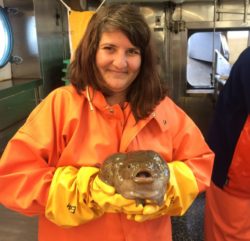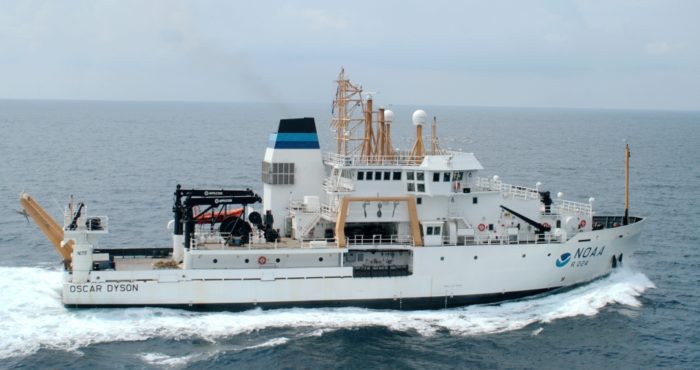Plenty of Fish in the Sea: Counting Fish Using Probability

In 2018, Emily Cilli-Turner sailed on a Midwater Assessment and Conservation Engineering Program (MACE) research cruise, which was conducting a walleye pollock acoustic-trawl survey in the Eastern Bering Sea. Learn more about Emily’s experience aboard the NOAA Ship Oscar Dyson by reading her NOAA Teacher at Sea blogs.
Grade Level: Sophomore university level or above
Subjects (Focus/Topic): Math – normal and hypergeometric probability distributions
Average Learning Time: two, 65-minute periods
Description: Students will apply the knowledge they already have on hypergeometric and normal probability distributions to determine properties of the samples of pollock collected onboard the NOAA Ship Oscar Dyson, such as type of distribution, amount of pollock expected in a certain length or weight range, how many pollock should be sampled to ensure certain properties and the basics of how the fish samples are used to estimate numbers of pollock in the Eastern Bering Sea.

